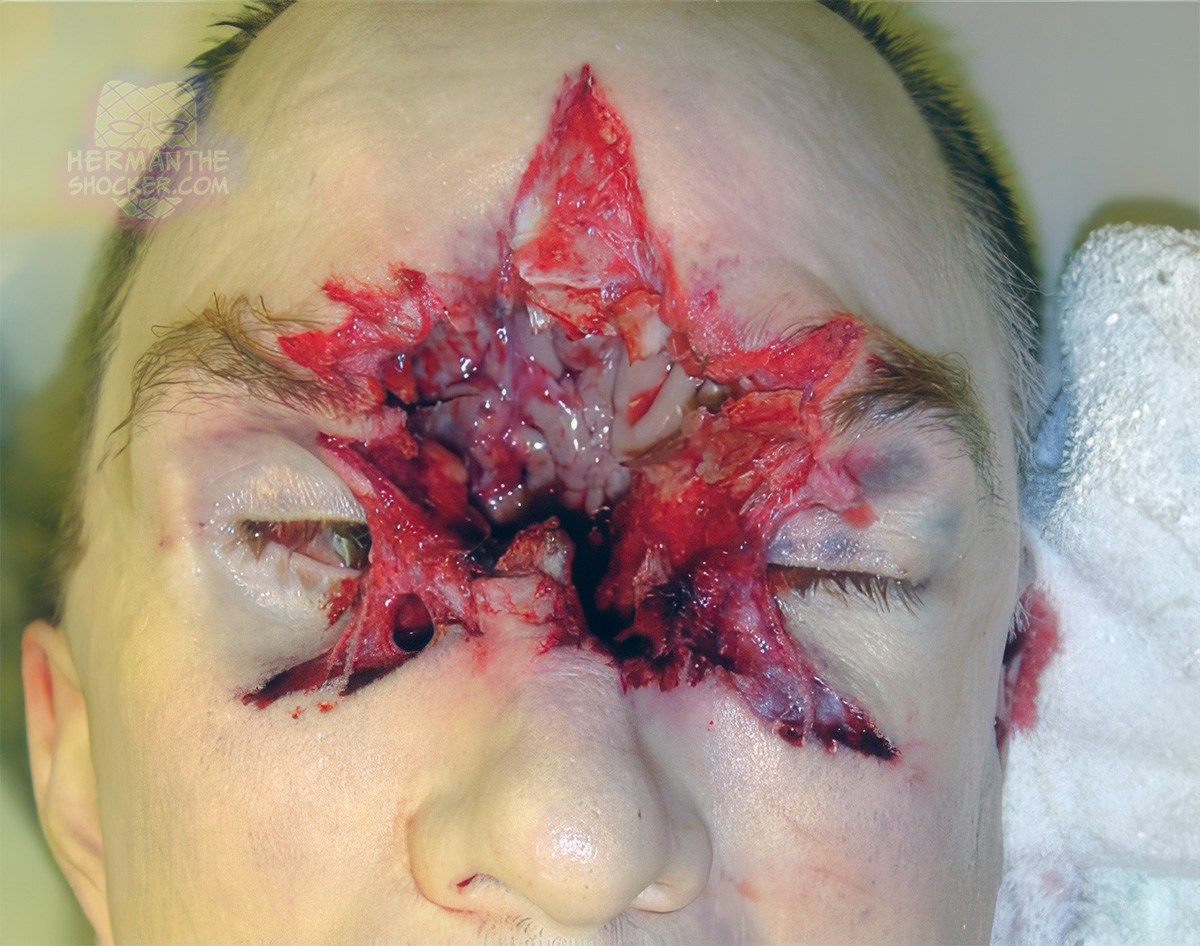Massive injuries from contact handgun wounds of the head, when they do occur, are associated with Magnum calibers, e.g., the .357 Magnum, the .44 Magnum, or high-velocity, high-energy cartridge loadings of medium caliber weapons, e.g., .38 Special +P+ cartridges. These cartridges can inflict contact wounds that in their severity mimic wounds from rifles and shotguns. Such a wound is illustrated in Fig.1, where the deceased shot himself in the head with a .357 Magnum revolver.
In contact gunshot wounds with bony tissue underlying the injury, the injuries are typically called a stellate wound, where the gases exit the barrel before the projectile. As a result, the gas collides with the bone tissue, resulting in the reflection of the gases. This gas causes the expansion of subcutaneous space and pressure, which results in an explosive injury, tearing, and lacerating the skin and subcutaneous tissue, resulting in the stellate wound. Additionally, the expanding gases also cause a back-splatter of soft-tissue and blood onto the firearm and fingers.
Latest posts









